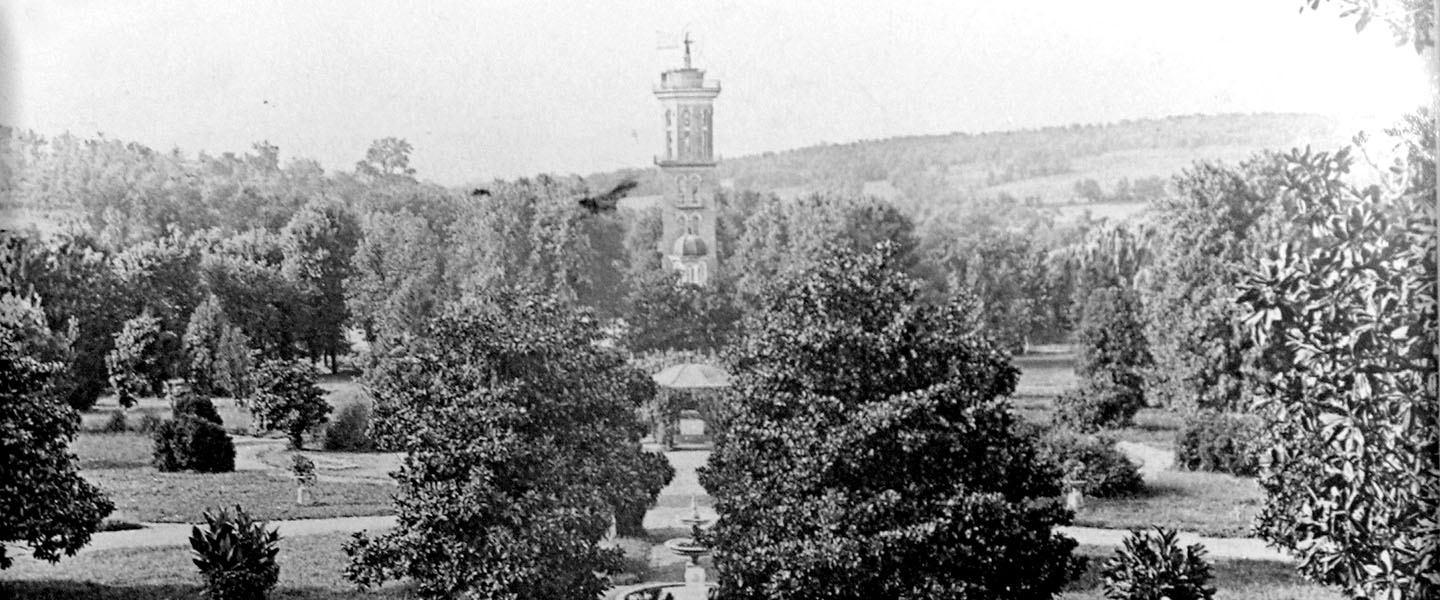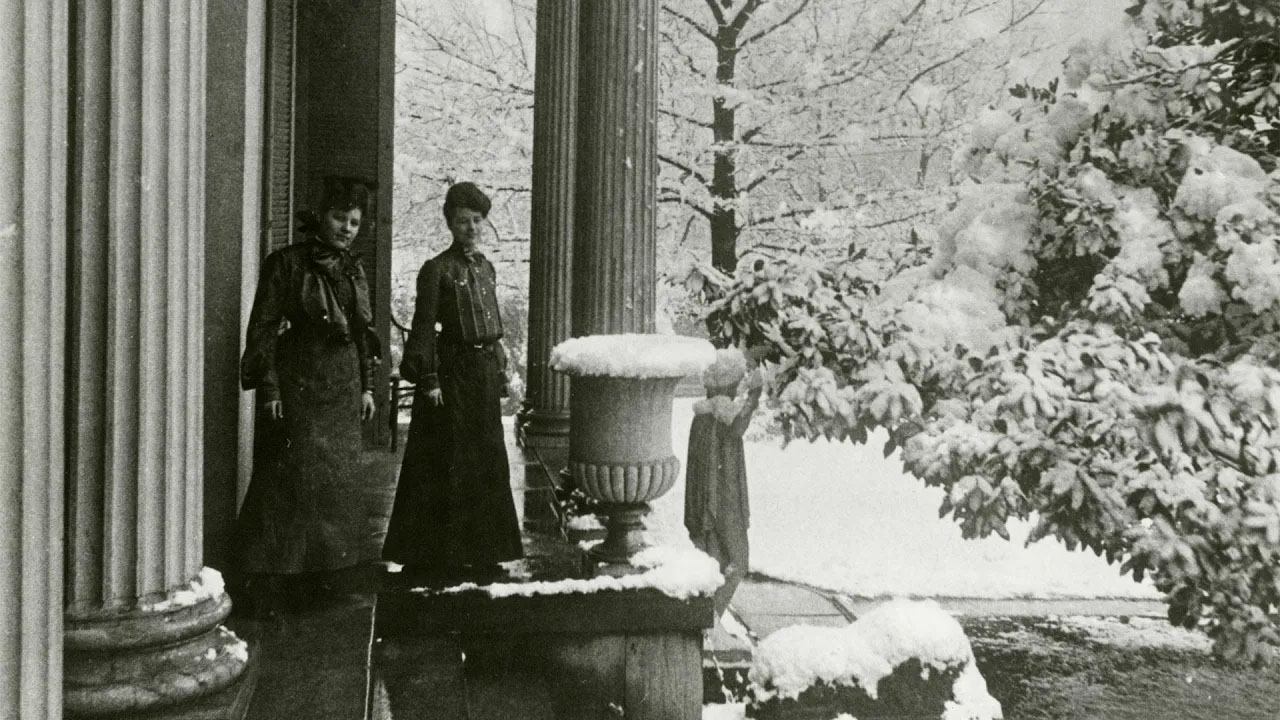In 1890, two school principals from Philadelphia founded a school to help female students find their voices at a time when women were expected to be quiet.
The school that Susan L. Heron and Ida B. Hood launched has grown and evolved in countless ways in the 130-plus years since then, but the founders’ mission of empowering students to find their purpose remains strong to this day.
Belmont Through the Years
1889
Susan L. Heron and Ida B. Hood choose the antebellum former Belle Monte estate site as the grounds for what is now known as Belmont University. The Bell Tower, Belmont’s now-famous cornerstone, inspired the duo to move forward despite the property’s dilapidated condition.
September 4, 1890
Belmont College for Young Women opens, bucking the traditional trend of sending girls to finishing schools by providing cultural, intellectual and social learning and empowering students to lead lives of purpose. That first year, 90 students enrolled, paying $60 in tuition.
1913
Heron and Hood retire. Belmont College merges with Nashville’s prestigious Ward Seminary for Young Ladies to form Ward-Belmont College.
1922
Ward-Belmont is home to the production of Nashville’s first radio broadcast — a concert by pianist Philip Gordon before a live audience of Ward-Belmont students and their families.
November 17, 1934
In the wake of the Great Depression, President Franklin Delano Roosevelt visits campus with First Lady Eleanor Roosevelt. Classes are suspended, and students welcome the presidential brigade to campus.
Late 1950
Facing debt and intimidating endowment requirements, Ward-Belmont’s board begins looking for new funding options.
February 27, 1951
The executive board of the Tennessee Baptist Convention unanimously votes to purchase Ward-Belmont’s property.
Spring, 1951
Ward-Belmont becomes a coeducational, four-year institution, and the former Ward-Belmont preparatory school moves to a 26-acre estate across town. Enrolling 161 girls during its first year, the school would later become Harpeth Hall, one of the finest schools for girls in the nation.
May 1951
The newly appointed board of trustees choose a new name for the school: Belmont College.
April 27, 1959
Dr. Herbert Gabhart, pastor of McLean Boulevard Baptist Church in Memphis, accepts an offer to become Belmont’s president.
March 11, 1965
Belmont’s board unanimously passes a recommendation to admit any student who meets requirements, regardless of race, and President Gabhart signs the Certification of Assurance of Compliance with Provisions of Civil Rights Act of 1964.
1966
Construction begins on an auditorium and fine arts center. Thanks to a gift of $250,000, Nashville businessman and philanthropist Jack C. Massey earns naming rights. At the dedication, Massey announces his desire to also fund a state-of-the-art business program at Belmont.
1968
Coach Betty Wiseman launches Belmont’s women’s basketball program, the first of its kind in the south.
Spring 1970
Fannie Delores Valree is the first African American student to graduate from Belmont College, earning a Bachelor of Science degree.
1971
Based on a suggestion from music legend Roy Acuff, Professor Robert E. Mulloy starts teaching an Introduction to Music Business course — and the school’s music business program is born.
December 1972
A fire destroys Blanton Hall, a cornerstone of the campus, along with registrar records, in-progress faculty dissertations and the College’s library. Damages are estimated at $2 million.
1982
Dr. Gabhart retires as president of Belmont College and moves into the position of chancellor, one he would serve in for 27 more years. During his time as president, enrollment grew from 365 to more than 2,000, and the budget grew from $480,000 to $8 million. Dr. Bill Troutt, Belmont College executive vice president, steps into the role of president after Dr. Gabhart’s retirement, making him the youngest college president in the U.S.
1986
The Bell Tower’s carillon bells return to campus after having been sold years earlier for desperately needed funds. Faculty, staff, students and neighbors gather to welcome the bells back home.
1991
Belmont College becomes Belmont University.
1999
Belmont officially becomes a member of NCAA Division I, thanks to President Troutt’s efforts to gain wider recognition for the University’s athletic programs.
2000
Dr. Bob Fisher is hired as president after a successful career in higher education as a vice president, professor and economist.
2003
Belmont opens the Beaman Student Life Center, Curb Event Center and Maddox Grand Atrium, a $52 million, three-building athletic and student life complex that illustrates Belmont’s commitment to the student experience, both in and out of the classroom.
November 2007
A lawsuit between Belmont and the Tennessee Baptist Convention reaches a resolution. With the settlement, Belmont honors its Baptist heritage but steps forward as an independent, ecumenical Christian university with no denominational ties.
October 7, 2008
Belmont hosts Senators John McCain and Barack Obama in the 2008 Town Hall Presidential Debate. The debate, moderated by NBC News’ Tom Brokaw, generated considerable attention from national and international media.
October 7, 2009
Belmont announces its intention to open a College of Law, the first newly accredited law school in Middle Tennessee in nearly 100 years.
2011
Belmont funds the renovation of the historic E.S. Rose Park. A shared facility for use by Metro Schools, the Easley Center, the community and Belmont, Rose Park serves as a constant reminder of the University’s strong ties with the community.
March 2013
The Bridges to Belmont program launches with the goal of enrolling 26 high-potential students from Metro Nashville Public Schools who otherwise may not have been able to consider Belmont.
February 10, 2014
Following the renovation of an original club house, the Foutch Alumni House opens to welcome graduates home to campus.
August 2014
The Janet Ayers Academic Center opens: a five-story, 186,000-square foot building, home to three Belmont colleges and the campus’s first chapel.
January 2015
Basketball legend Rick Byrd, Belmont’s head coach, becomes the 25th head coach in NCAA Division I men’s basketball history to win 700 games.
August 2015
Belmont opens the four-story, 116,000-square-foot R. Milton and Denice Johnson Center to house a new dining hall, the Media Studies Program and the Mike Curb College of Entertainment and Music Business.
June 1, 2021
Dr. Greg Jones becomes president of Belmont University. The former dean of Duke Divinity School and provost and executive vice president of Baylor University, President Jones is a celebrated speaker, author, educator and business leader who is dedicated to forming leaders of character who are committed to helping people and communities flourish.
Today
Nationally recognized for high-quality academic programs and an innovative approach, Belmont is furthering its efforts to become the leading Christ-centered university in the world. With more than 165 programs of undergraduate and graduate study and nearly 9,000 students from every state and more than 30 countries, Belmont radically champions the pursuit of a life abundant for all people.


